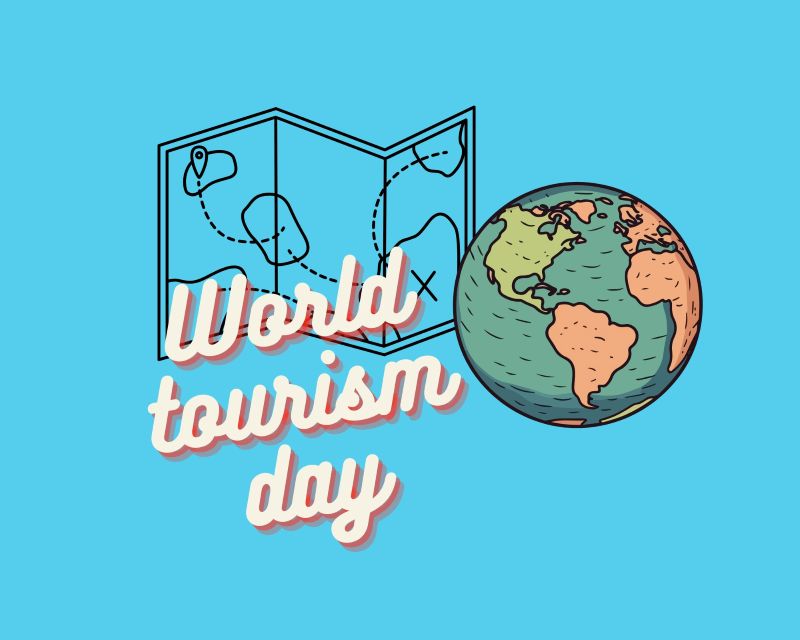World Tourism Day has been celebrated on September 27 every year since 1980. This celebration, established by the United Nations World Tourism Organization (UNWTO), aims to promote and recognize the importance of tourism globally, emphasizing its central role in the sustainable economic and cultural development of modern societies. Tourism creates connections between peoples and cultures, fostering mutual understanding and international cooperation.

In recent years, thanks to the so-called "Korean Wave" (or Hallyu) that has conquered the world, Korea has become an increasingly popular tourist destination. Among the many reasons that draw visitors to the Land of the Morning Calm is the extraordinary wealth of UNESCO-recognized sites. Since 1995, 17 sites have been inscribed on the World Heritage List.
The first sites to be recognized, in 1995, were Seokguram Cave and Bulguksa Temple. Inside the cave there is a monumental Buddha statue, considered one of the absolute masterpieces of Far Eastern Buddhist art. Bulguksa Temple, also of great historical and spiritual importance, is an emblematic example of Silla Dynasty religious architecture. Another site inscribed by UNESCO in 1995 is the Baekje Historic Area, which testifies to the splendor of one of the Three Kingdoms of Korea and its cultural and artistic influence in the Asian region. Also in 1995, Haeinsa Temple Janggyeong Panjeon, one of the oldest existing Confucian shrines in the world, was inscribed. It is associated with the Jongmyo Jerye ceremony, a UNESCO Intangible Cultural Heritage, accompanied by ritual music and dance.
In 1997, two sites were inscribed: Changdeokgung Palace in Seoul and Hwaseong Fortress in Suwon. Changdeokgung Palace is one of the five palaces of the Joseon Dynasty, the best preserved, and stands out for its balance between nature and architecture. Inside, it features a beautiful secret garden. Hwaseong Fortress was built by King Jeongjo in honor of his father between 1794 and 1796 and is a splendid example of military architecture.
The new millennium in 2000 saw the recognition of two archaeological sites: the Gochang, Hwasun, and Ganghwa Dolmen Sites, which testify to the presence of megalithic culture in Korea, and the Gyeongju area, home to many examples of Korean Buddhist art from the seventh to tenth centuries. In 2007, the volcanic island of Jeju, the setting for numerous K-dramas, was recognized as a World Heritage Site for its natural beauty, which bears witness to the evolution and history of the planet. The 40 tombs that comprise the royal tombs of the Joseon Dynasty were recognized as a World Heritage Site in 2009; Built over a period spanning more than five centuries, from 1408 to 1966, these tombs blend perfectly with the natural landscape. The following year, 2010, saw the historic villages of Hahoe and Yangdong recognized as UNESCO World Heritage Sites. Situated among forested mountains, overlooking a river and cultivated fields, these ancient villages draw both spiritual and physical nourishment from their location.
The city of Namhansanseong, established in 2014 as an emergency capital for the Joseon Dynasty, is located in mountainous area 25 km from Seoul. It embodies all the distinctive characteristics of the most important defensive sites in the Far East.
Baekje Historic Areas, inscribed as a World Heritage Site in 2015, consists of eight monuments located in three Korean cities: Gongju, Buyeo, and Iksan, recognized for their extraordinary architecture.
Sansa, Buddhist Mountain Monasteries, located in the southern part of the Korean Peninsula, were inscribed in 2018 as a testament to the development of Korean Buddhism over the centuries.
Seowon, Korean Neo-Confucian Academies, the complex inscribed in 2019, comprises nine seowon, a type of Neo-Confucian academy from the Joseon Dynasty, active from the 15th to the 19th century.
From a naturalistic perspective, in 2021, UNESCO decided to recognize the Getbol, Korean Tidal Flats, as a World Heritage Site. These coastal sedimentary areas are very important because they represent the habitat of various types of marine and terrestrial organisms.
In 2023, Korea's archaeological heritage gained new recognition with the Gaya Tumuli, which bear witness to ancient East Asian civilizations.
The latest recognition occurred this year, 2025, and concerns the Petroglyphs along the Bangucheon Stream as an expression of prehistoric and historical culture in Korea.
Korea, with its 17 UNESCO sites, represents a true treasure trove of culture, spirituality, and nature. Visiting these places means not only admiring architectural beauty and breathtaking landscapes, but also immersing yourself on it.

info e credits:
UNESCO World Heritage in Korea | KCCUK
World Tourism Day 2025: “Tourism and Sustainable Transformation” - Economic Cooperation Organization
How about this article?
- Like2
- Support0
- Amazing0
- Sad0
- Curious0
- Insightful0


